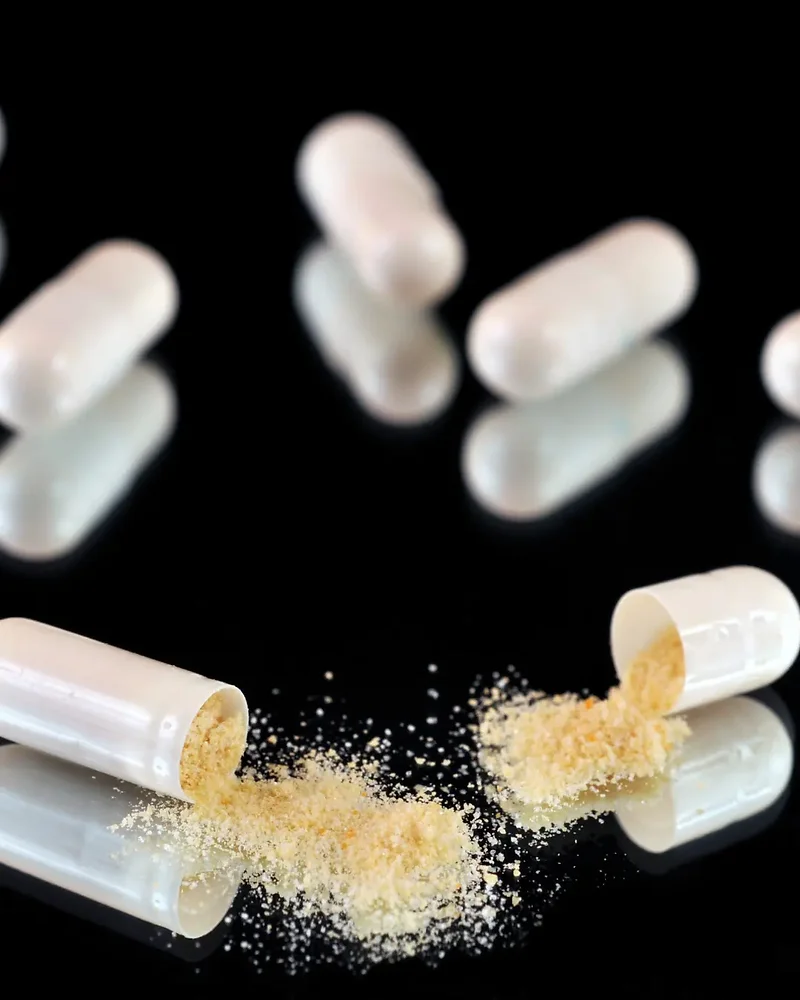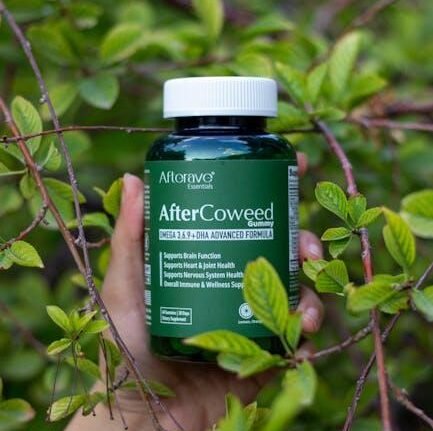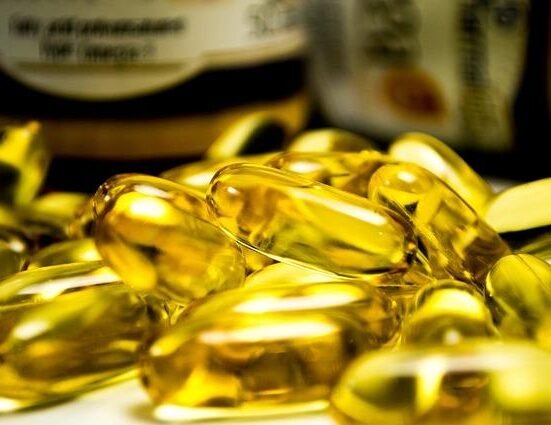Not a day goes by when we don’t get questions about the various “other” ingredients in supplements. There are a number of additives in supplements: fillers, binders, dilutents, dissolution aids, excipients, sweeteners, flavorings, colors, enteric coating, and the ingredients a capsule, chewable, or softgel is made of. Every once in a while, either due to a social media trend, a company’s marketing efforts, or an in vitro study discussed on the news, a particular one will enter the spotlight. Often, the big headlines are completely wrong, but they get picked up, and by then, the bad information has made the rounds, and it’s too late to stop it. Many companies use the fact that they are free of a particular ingredient in their marketing, trying to convince people that because their product is free of a specific additive, it’s better than other products. In case it’s not clear from all my other blogs, I am not a huge fan of most marketing departments.
Why are additives used in supplements?
There are several reasons why additives are sometimes necessary. Here are a few examples:
-
Make an ingredient go through the machinery more easily.
-
Protect ingredients from degradation.
-
Fill up a capsule.
-
Increase the absorption of nutrients or compounds.
-
Speed up the breakdown of a tablet.
-
Hold a tablet together.
-
Make ingredients blend together more easily.
-
Improve the dissolution of powders into liquids.
-
Improve the taste of a formula.
-
Improve the mouthfeel of a formula.
-
Used as a carrier for an ingredient. Some ingredients need to have a carrier to make them able to be added to a formula or are added as part of their drying process. For example, some ingredients are spray-dried onto a carrier, such as maltodextrin.
-
Used to dilute an ingredient that is too concentrated to be added directly to a formula.
-
Used as a preservative.
-
Used as a stabilizer to keep the pH in the correct range to prevent the growth of mold, yeasts, bacteria, or fungi.
Does every formula need these things? Nope, but some do. Not everything can be made additive-free, despite the marketing claims made by certain companies and influencers.
What are the different additives in supplements?
There are numerous types used, and it would be impossible to cover them all in one article; however, we can discuss the most common ones.
-
Cellulose
-
There are a lot of types of cellulose used in supplements that perform a variety of functions. Cellulose in supplements is derived from various plants and then modified in specific ways to suit its intended use. You will see various forms of it going by different names in supplements.
-
Methylcellulose
-
This is used to fill capsules. Sometimes, the ingredients and amounts in a capsule don’t completely fill it, so cellulose is added to fill the rest of the capsule.
-
Hypromellose, also known as HPMC or hydroxypropyl methyl cellulose.
-
Croscarmellose sodium
-
-
Carboxymethylcellulose, also known as CMC or cellulose gum
-
Microcrystalline cellulose
-
DR Caps
-
-
Silica, also known as silicon dioxide.
-
It can be derived from various sources, including quartz or sand, or synthetically produced.
-
Used as an anti-caking agent
-
Used to make it easier for ingredients to go through the tableting and encapsulation equipment.
-
-
Stearates
-
Made by reacting stearic acid, which in supplements is usually derived from coconut and palm oils, with a mineral such as magnesium oxide.
-
Goes by a number of names, including stearic acid, magnesium stearate, calcium stearate, vegetable magnesium stearate, and vegetable stearates.
-
Used as a lubricant to prevent ingredients from sticking to the machinery.
-
-
Citric Acid
-
Generally produced via fermentation. Occasionally extracted from fruit, however, it is extremely expensive to produce large amounts of citric acid that way, so it is not done very often.
-
Used as a pH stabilizer to prevent mold, fungi, bacteria, and yeast growth.
-
-
Glycerin
-
Derived from oils including palm, coconut, and rapeseed.
-
Helps to improve taste, texture, mouthfeel, and coat tablets to make them easier to swallow.
-
-
Gelatin
-
Can be made from beef (sometimes labeled as bovine), pork (sometimes labeled as porcine), or fish.
-
Used to make capsules. These break down more slowly than vegicaps and provide more protection from digestive secretions than traditional vegetarian capsules.
-
-
Talc, also known as magnesium silicate
-
Titanium dioxide
-
Maltodextrin
-
It is derived from a variety of plants, typically through a process of hydrolysis.
-
Acts as a carrier for other ingredients. For example, many ingredients are spray-dried onto it.
-
Added as a carbohydrate source to some supplements.
-
-
Polydextrose
-
Dicalcium phosphate
-
Typically made by reacting phosphoric acid with a calcium-containing substance like calcium hydroxide (lime) or tricalcium phosphate.
-
Has a number of uses, including serving as a filler, binder, helping to speed up tablet disintegration, and acting as an anti-caking agent.
-
-
BHT, also known as Butylated hydroxytoluene
-
Carrageenan,
-
Typically derived from red seaweed.
-
Also known as seaweed extract.
-
It is considered a gum.
-
Used to help prevent vegetarian softgels from breaking down.
-
Also used as an emulsifier and thickener.
-
-
Povidone
-
Modified food starch
-
Ascorbyl palmitate
-
Leucine
-
Sorbitol
-
Caramel color
-
Enteric coating
-
Rosemary Extract
-
Lecithin
-
Potassium sorbate
-
Sodium Benzoate
-
Gums
-
Also known as guar gum, xanthan gum, gellan gum, and cellulose gum
-
Used as thickeners and emulsifiers.
-
-
Rice Hulls and Rice Starch
Ways that companies hide additives in their products
There are several ways companies conceal additives on the label, and at other times, companies simply fail to list them, which is an unfortunate but common practice.
Sometimes, companies are aware that consumers are avoiding certain additives, so they prefer not to list them on the label; however, they still need that additive to make the formula effective. One of the best examples of this is carrageenan. Many companies simply changed the name from carrageenan to seaweed extract. Now their label looks cleaner and people are happy, but the formula remains unchanged.
Here are a few more examples:
Name changing is one of the most frequently used methods companies employ to hide additives.
The first trick used is changing where the additives are placed on the label and in the formula to make it appear as though the product is additive-free, even though it’s not, which helps with marketing. Here are a few examples:
-
Listing ascorbyl palmitate as a vitamin C source when it is being used a flow agent. You would see this on a label where there were only a few milligrams of vitamin C.
-
Putting things like lecithin or sugars in an ingredient blend rather than in the other ingredients.
Leaving off ingredients from a more complex additive is our next magic trick. An example of this is enteric coating. Enteric coatings often contain undesirable substances, such as plastics, phthalates, parabens, and a range of other unwanted ingredients. What a lot of companies will do is put enteric coating on the label and not put what’s in it, despite being required to by law, or they will write something like enteric coating (water, cellulose, gellan gum) and not put the rest of the ingredients in the enteric coating on the label. This makes their label look clean, which is excellent for marketing. We recommend avoiding all enteric-coated supplements, as it is nearly impossible to know if companies are being honest about listing all of the ingredients. There are newer and better ways to protect supplements, so there is really no need for enteric coating anymore, except that companies can save a few cents by using enteric coating instead of the superior new methods that are available.
Another practice is for companies to simply not list ingredients on the label. This can stem from their being deceptive, wanting to advertise as additive-free, or because they are unaware of what’s actually in the raw materials they are using. Here are a few examples of this:
-
Betaine HCL is often spray-dried onto povidone, a plastic. This ingredient is rarely listed on the label, despite being used in the production of most Betaine HCL supplements.
-
BHT is used as a preservative in most bulk vitamin D used to make supplements. This is almost never listed on the label.
-
Lactose is also used as a filler in bulk vitamin D that is used to make supplements, but is almost never listed on the label.
-
Maltodextrin is often added to aloe supplements to help them pass testing and make them appear to have more polysaccharides than they actually do. It is almost never listed on the label.
-
Maltodextrin and other starches are often used as a carrier for various spray-dried ingredients, including mushrooms, fruit, herbs, and vegetable powders. It is almost never listed on the label.
-
Caramelized sugar is often added to many maca powders to impart a distinct flavor, but it is not disclosed on the label.
-
There are far too many examples of this to list.
Including ingredients in a product without listing them on the label is a despicable practice that needs to be ended.
Are additives in supplements safe?
Before we delve into that question, we need to go over some basic science. There are three main types of research, and it is crucial to understand what each one is.
-
In vitro
-
Studies are done in a petri dish or test tube. This is often done with human cells or blood samples, which can lead to considerable confusion. Studies on human cells or blood are not the same as studies conducted on live people, and results obtained from human cells should not be extrapolated to have the same effects on a live person.
-
-
In vivo
-
Animal study
-
Studies are conducted on laboratory animals, such as mice, rats, and rabbits.
-
It’s really important to understand that just because something happens to cells in a petri dish or mice, it does not mean that those adverse effects will happen in people, or that something dangerous to cells in a petri dish or lab rats will hurt people. For example, you can achieve a high enough concentration of vitamin C in a petri dish to kill cells, but that does not mean that vitamin C is harmful to people. The way animals metabolize things is often different than people, and ingesting a substance and having it go through the digestive process in a live person is very different than dumping a bunch of a substance on cells in a petri dish.
Another thing to consider is that there are often different forms of the same ingredient, where one form is harmful and the other is not. Research showing one form is bad for you does not mean that all forms are bad. For example, studies showing that degraded carageenan causes health problems do not mean that non-degraded carageenan causes the same health issues.
The next consideration is the dosage. Many substances, when taken in high dosages, can be harmful; however, in the small amounts found in supplements or foods, there are often no issues. For example, drinking too much water in a short period can be fatal, but it does not mean that adding a small amount of water to a supplement is dangerous.
Lastly, regarding the safety of additives, some ingredients can be either harmful or safe, depending on the method of exposure. For example, inhaling silicon dioxide (silica) is very harmful to the lungs, but that does not mean that ingesting some in a pill is equally detrimental.
How good research is conducted involves researching a substance in vitro, then in animal studies, and finally in vivo. Claims for safety or negative effects in people should not be based on in vitro and animal studies.
Three additives seem to receive the most attention, so we will use them as an example when discussing the safety of supplement additives.
Carrageenan in supplements
The first is carrageenan. Multiple studies have demonstrated that degraded carrageenan can lead to significant issues in the gut. Degraded carrageenan is actually used in lab animal studies to cause intestinal ulceration. However, non-degraded carrageenan has not shown the same problematic effects in people. Studies done on degraded carrageenan do not prove that non-degraded carrageenan is harmful and should not be automatically applied. Unfortunately, far too many companies decided to demonize carrageenan and advertise their products as being free from it, without informing people that what they were referencing was not commonly found in foods and supplements. The real issue with carrageenan in supplements and foods is that it can be almost impossible to know if a company is using degraded or non-degraded carrageenan. All companies claim to use the non-degraded version, but we know that corporations often exaggerate or mislead to increase profits. Lots of companies are now listing seaweed extract or Irish moss on their label instead of carrageenan, even though the ingredient has not changed, in order to appeal to consumers looking for carrageenan-free products. This is excellent marketing, but not exactly an ethical practice. On another note, it’s amusing to see so many people and companies who are anti-carrageenan taking and selling sea moss gel, which is packed with carrageenan.
Silicon dioxide and silica in supplements
It’s become quite popular recently to criticize this additive. Inhaling silicon dioxide can indeed be harmful, but that is not how you are supposed to take your supplements. Lots of things are harmful when inhaled, but completely safe when ingested. This is because fine particles and powders can damage delicate lung tissues.
Magnesium stearates, stearates, and stearic acid in supplements
No other additive has gotten a worse rap in the past few years than magnesium stearate. Magnesium stearate is made by combining magnesium with stearic acid. A few companies found studies showing that it caused problems in rats and test tubes, and then they exaggerated those claims to sell their products, leading to many people insisting that magnesium stearate is harmful and should not be in supplements. Now, most of our products don’t contain magnesium stearate, and I don’t particularly care if people want to avoid it, but I really hate it when companies promote misleading or incorrect information to sell products.
The average supplement that contains magnesium stearate contains about twenty milligrams of stearic acid. The average chocolate bar contains approximately 5,000 milligrams (five grams) of stearic acid. You would need to take a lot of pills, far more than anyone would actually take, just to get the same amount of stearic acid in one chocolate bar.
Let’s review a few of the studies and claims cited to try to convince people that it is dangerous.
The first study was based on the effects of stearic acid on T-cells in vitro (cells in a lab setting). The cells were saturated with stearic acid. The problem here is not just that we should not apply the results of test tube studies to live people; it’s that cells in your body would never be exposed to levels of stearic acid as high as those in these studies because it’s not physiologically possible. You would be dead if you had that high of levels in your body of any fatty acid. This is the study most often cited to claim that magnesium stearate is detrimental to the immune system.
Another claim is that magnesium stearate promotes the formation of colonies of harmful bacteria in the gut and creates biofilms that reduce nutrient absorption. We have seen this claim repeated numerous times, and yet when we contact the websites and companies promoting it, they are unable to provide any references to support those claims. It appears that the various places promoting this are simply copying each other and hoping no one actually investigates it. We could find no studies on PubMed or other scientific publications showing support for these claims. If someone has a study that supports their claims, please send it to us, as we would love to read it. The other thing to know is that not all biofilms are bad; some are very important to our gut microbiome.
The next claim we have seen is that magnesium stearate reduces the absorption of nutrients. The study most often cited for this shows that magnesium stearate may slightly change the release rate of the ingredients, but it did not show that it reduced the absorption of nutrients.
Another strange claim we have seen is that magnesium stearate is the same as blackboard chalk. This is just patently false. It is an entirely different compound. It’s really weird to have companies saying something like this that would be easily debunked.
The use of pesticides to grow the oils from which it is made is another claim for why magnesium stearate is bad. The issue with that claim is that the stearic acid is isolated, highly purified, and refined from the original oil, meaning little to no pesticide residue would remain. Pesticide residue is not an issue with magnesium stearate, regardless of the plant from which it is made.
There was a single batch of magnesium stearate made by one manufacturer that was found to be contaminated. However, this was a manufacturing issue, and no one was harmed by it. Saying this is a reason to avoid magnesium stearate is like saying that because one batch of lettuce was contaminated with Listeria, no one should ever eat lettuce again.
It is often claimed that magnesium stearate is made from trans fats. This is not true, as the stearic acid commonly used in supplements is derived from non-hydrogenated plant oils, such as palm. In the past, some stearic acid used in supplements was made from animal fats, but that is not really done much anymore. That claim is just patently false and would only be used by people who are being completely disingenuous or those who don’t know how it is made.
Now, I will say that there is an ethical issue with a lot of magnesium stearate. Most magnesium stearate is made with stearic acid derived from palm oil. Palm oil is horrible for the environment. While these misleading advertising and marketing campaigns should never have happened, one good thing that came out of it is a reduction in palm oil usage in supplements.
Here are some additives that we do recommend avoiding:
Unfortunately, not all of these additives will appear on the label, even if they are present in the product, due to dishonesty or a lack of knowledge on the part of the companies selling the products.
While many additives may have long names that seem intimidating, most of them are completely harmless at the amounts and delivery systems used in supplements. They are being used as a scare tactic by companies to make their products appear better in marketing campaigns, rather than being based on any real science. We have a wide range of products without additives, but that does not necessarily make them better than products with additives. Whether or not something contains an additive is not the determining factor as to its quality. For example, an additive-free SAM-e supplement would be a very poor-quality product. There are far more important things to consider when deciding whether a product is good or not. Check out our blog on quality control to see what things you should look for.
Additives in Supplements – Questions and Support
If you have questions about the additives used in our supplements, please email us at info@rooted-nutrition.com, and we will be happy to answer them!













Leave feedback about this